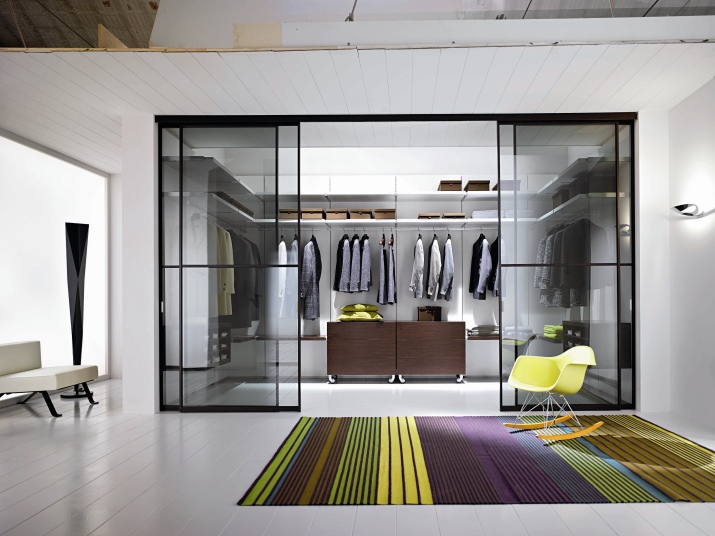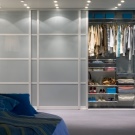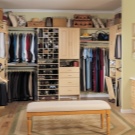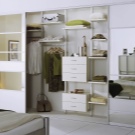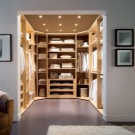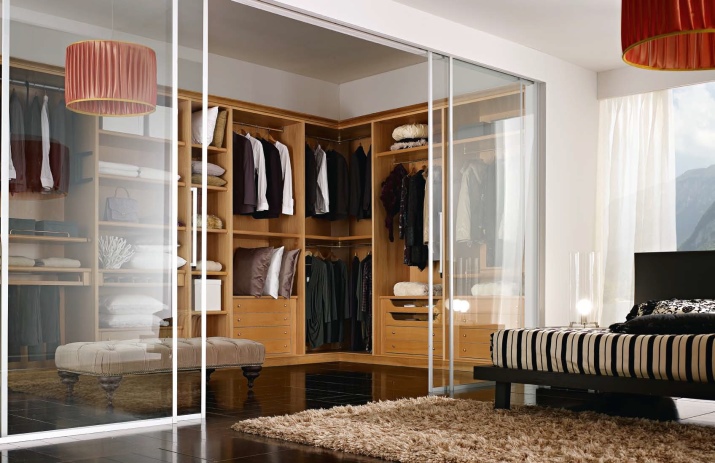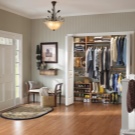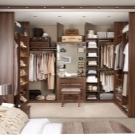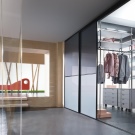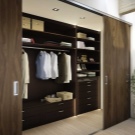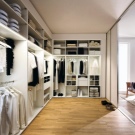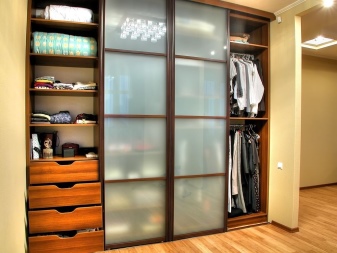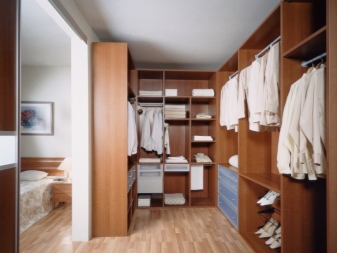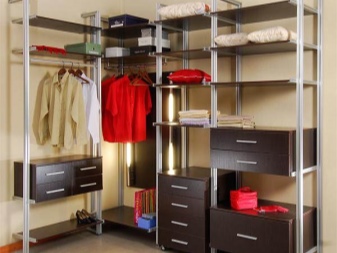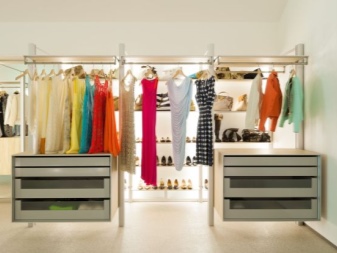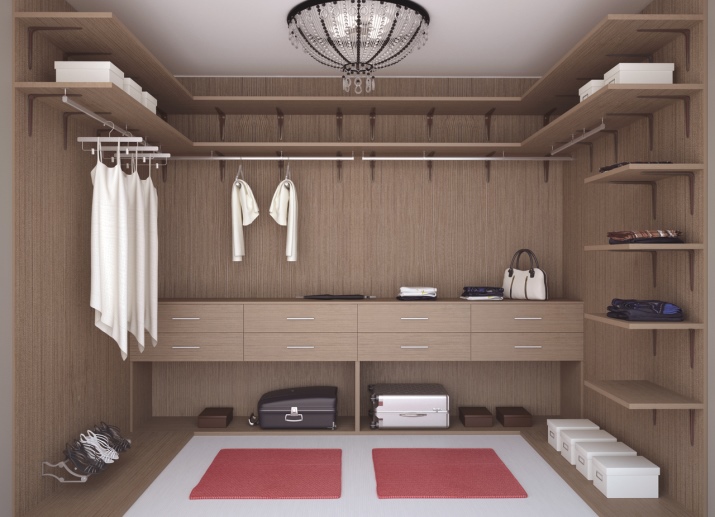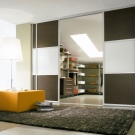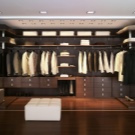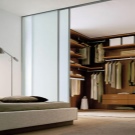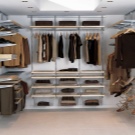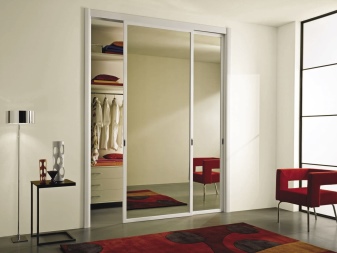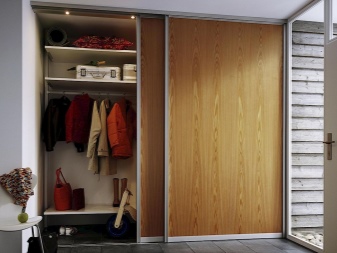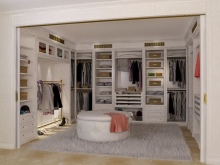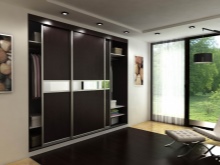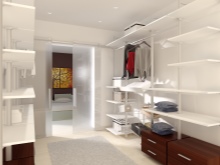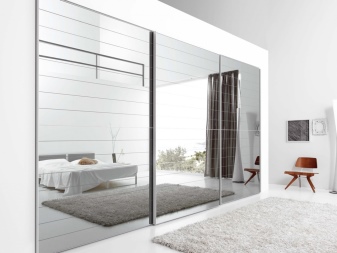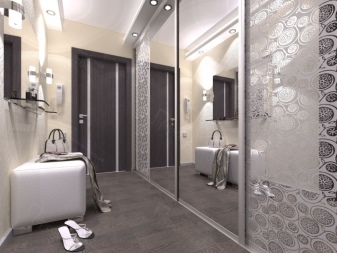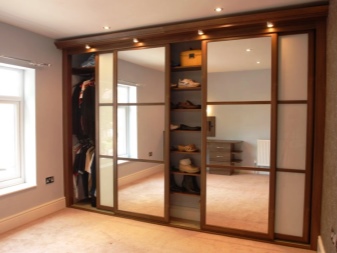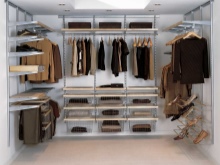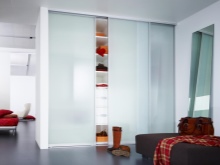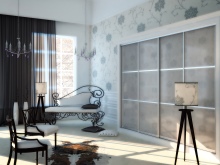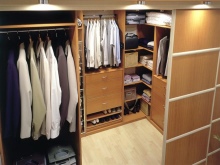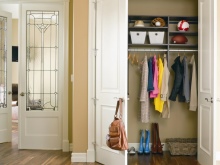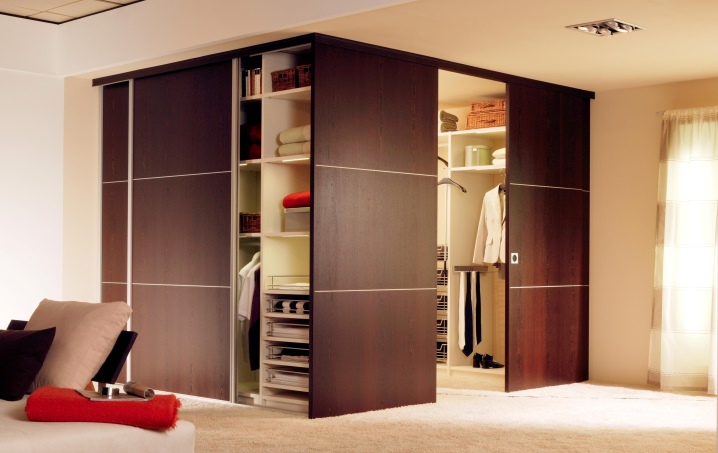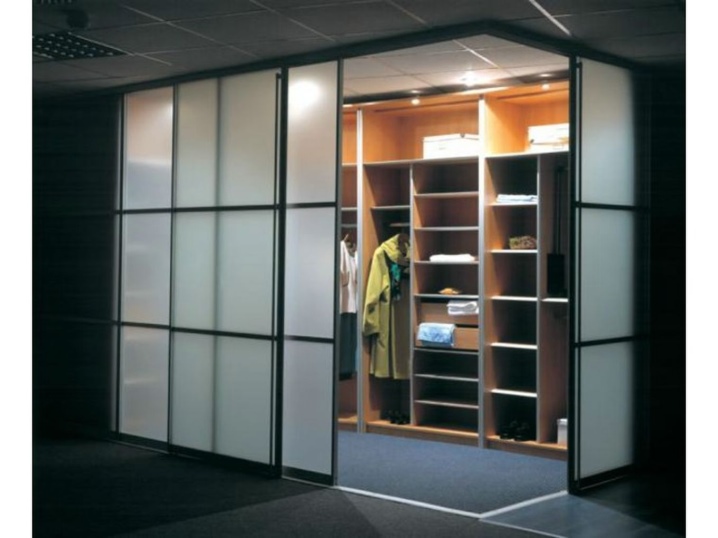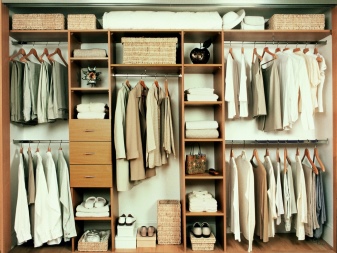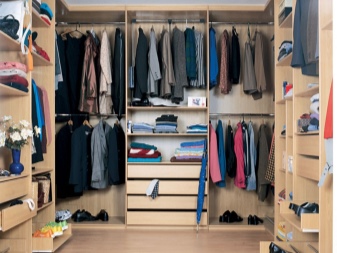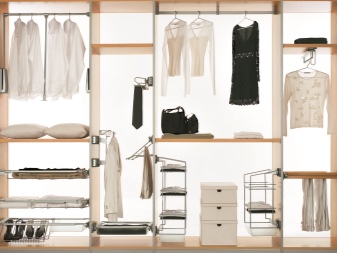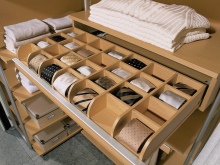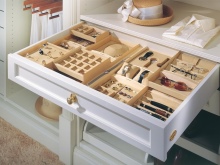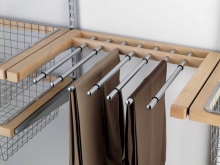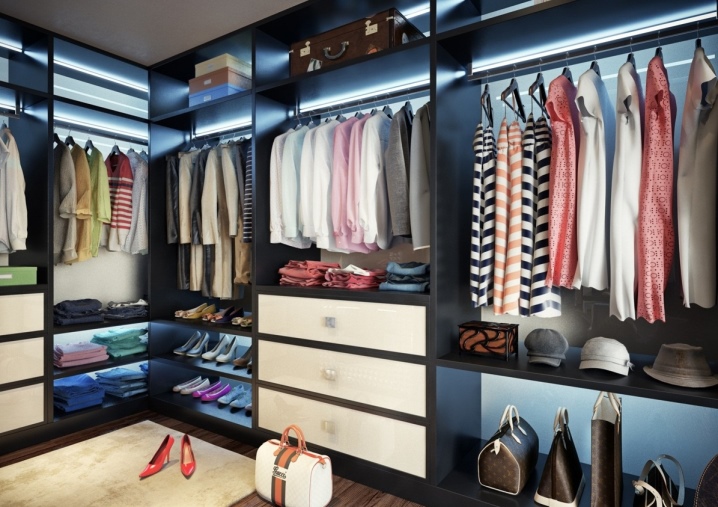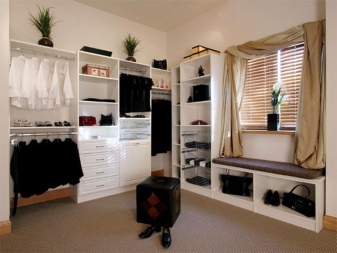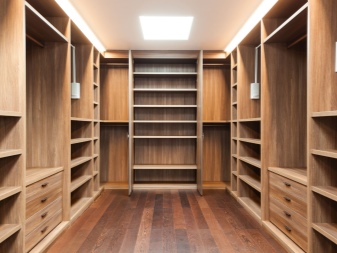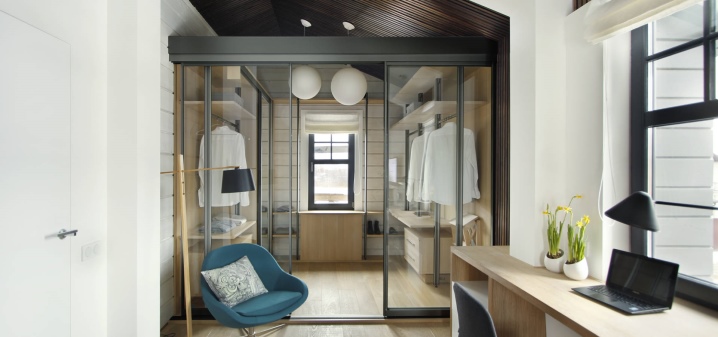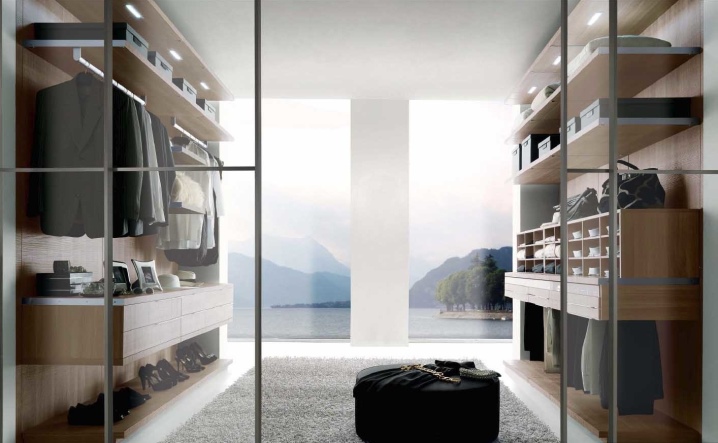Built in wardrobes
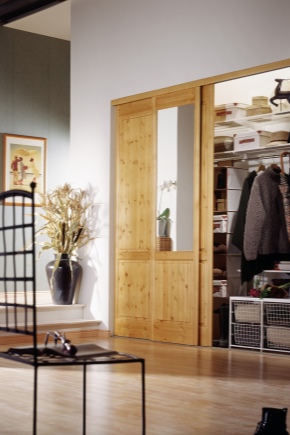
The theater begins with a hanger, and the order in the house - with a spacious dressing room. Typically, cabinets are crammed with things, although clothes can be neatly placed on the shelves of a built-in wardrobe. So they will take a lot less space with more benefit.
To order or make your own mini-wardrobe, it is enough to choose the right place, to determine the type, size and design of the future storage of clothes.
Features and benefits
The main advantage of the built-in wardrobe is its convenience. Competently collected and thoughtful wardrobe can accommodate more than 40% of things, including shoes and dresses. Beautiful and compact storage is ideal for small city apartments, where the issue of saving space is very urgent.
Depending on the type of built-in wardrobe, their features differ:
- In some, you can change the configuration of the shelves, raise or lower the modules, add new ones and install whole fragments for transportation.
- In others, there is enough space to hang mirrors, shelves and put the dresser.
- Still others respond to the demands of style-conscious buyers (assemblies under high-tech), while the fourth hides the contents behind sliding doors from prying eyes.
Types of wardrobe
Conventionally, all built-in wardrobes are divided into four types:
- Cabinet wardrobe. This is the most popular design, which resembles a wardrobe. The system consists of elements that are interconnected with the help of angles and screeds. They give it strength and reliability. Spacious shelves (from 60 centimeters deep), a variety of drawers, drawers and baskets allow you to use all the available space. They are attached with additional holders, hooks for belts and ties, as well as special projections to hang a vacuum cleaner hose or an ironing board on them.
- Panel wardrobes have a special decorative facade.Because of the expensive materials (noble woods are used) and the demands of the design, they need a reasonable use of free space. For such wardrobe unacceptably large number of things on the shelves and in the drawers - they will spoil both aesthetic appearance and functionality.
- Frame (they are also called modular) dressing rooms are characterized by ease of installation and mobility. In contrast to the monolithic cabinet furniture, which can not be moved, modular products make it possible to arrange the individual elements in any order. To install them, it is not necessary to call the masters - it is quite possible to cope on your own, the main thing is to know exactly what result is expected at the end of the work.
- Another type of wardrobe - built into a niche. They do not have a roof and side walls, which greatly reduces the cost. Using the built-in wardrobe is easier to make space for other furniture. When choosing a wardrobe, one should take into account the internal content (number of sections, depth of shelves), door characteristics (at least one mirror should be inserted to expand the space), color and height.
Material and color
The choice of material for the built-in wardrobe depends on the preferences in design, financial possibilities and convenience. It is cheaper to use partitions from chipboard with veneer lining. To give a sophisticated look suitable materials for black and mahogany with a natural pattern. Modern solution - metal, aluminum and steel, glass inserts in the doors and internal shelves.
If you choose between wood and laminate, it is better to give preference to the first. She better passes moisture, "breathes", so that the optimal level of humidity is maintained in the dressing room. For furniture, covered with laminating film, you will have to buy more bags of silica gel (one for each section of 20 kilograms of clothing).
Color solutions can be different, and they depend entirely on the taste and preferences of the landlord.
Design options
First of all, the dressing room serves for storage, and only the second - for eye pleasing. Therefore, it should not stand out from the general style of the room. It is advisable to use for the decoration of doors and facade colors and materials that are already present in the interior. Experts recommend decorating the dressing room with mirror inserts. They will not only give additional lighting, but also visually expand the space.
Mirrors can be tinted and covered with any suitable patterns. For lovers of high-tech fit wardrobe of open-type metal pipes, or chrome-plated elements with many right angles and hard lines. The main thing to remember that depending on the location and type of dressing room design may vary. For example, a dressing room built into the pantry is usually hidden from prying eyes and does not require the original design. And the storage in the bedroom or living room must be in harmony with the rest of the furniture and not attract the attention with flashy colors.
Location
It is convenient to place small built-in walk-in closets in the hallway, storage room, use part of the loggia or balcony under them. It’s not worth putting an angular wardrobe in the living room - it will visually reduce it.
The area fenced off by the wooden panel also has both advantages and disadvantages. On the one hand, it is easy to decorate the wardrobe so that it does not catch the eye and looks aesthetically attractive. On the other hand, a large corner occupied by something mentally “presses”.
If there is nowhere to place a wardrobe in addition to a room, it would be more correct to give an angular wardrobe a parallelepiped shape with one cut corner. This will reduce the pressure and, as it were, press the dressing room into a corner, expanding the space. Moreover, capacity will not suffer.
Internal filling
Dresses, knitwear, bed linen, shoes and winter clothes - all this with proper planning can really be placed in one wardrobe. For ease of use it provides a variety of shelves, racks, cabinets, dressers, mirrors and hanging shelves. In order not to suffer, trying to get a costume or a dress, special systems with levers — pantographs — were invented. Sometimes they are installed in two rows for a lot of things.
A spacious room can be made with the help of open shelves and racks, as well as glass-aluminum inserts. Hangers are usually placed along the upper tier. It is more convenient to fold everyday things in deep open or translucent shelves at about the level of the eyes of each family member. Shoes and rarely used things are folded down in dressers and drawers with good ventilation.
Other subjects also deserve attention:
- pryamnitsa not help pomyatb pants;
- Shoe cap is ideal for storing shoes (it is ventilated using a mesh bottom).
Jewelry, belts and scarves should be hung so as not to crush them: on the doors and side walls, where special hooks are easily screwed.
A separate roomy shelf is necessary for bed linen, and for ties - tie-box. In the built-in wardrobe rooms, you can not only change clothes and put additional items, but also place a small dressing table or a compact ironing board, which when folded takes up little space.
Ventilation
Humidity and temperature are the main enemies of wood. In a suitable microclimate, the fungus and mold can in a matter of days capture all the space, make the tree porous and friable. Poorly ventilated rooms have an unpleasant smell of dampness and mustiness, with which things are also impregnated. To avoid this, it is necessary at the planning stage of the dressing room to provide two ways to let in fresh air: natural and forced.
In the first case, you need a window and a constant circulation of oxygen, which will move to the exhaust through the room, thereby not allowing moisture and microbes to settle on the shelves and drawers.
In the second, a little more effort will be needed, including the installation of an exhaust duct, a fan and wall valves. If one of the walls of the dressing room is bordered by the street, then you can make a hole at the top of the wall, insert a plastic pipe into it, and inside it - an exhaust duct fan of the required power. It is possible to organize the flow of air from other rooms with already installed air conditioners and fans.
It is important to remember that the temperature in the dressing room should not rise above 20 degrees!
Ideas in the interior
Design is a creative activity that requires a rich imagination, spatial thinking and a sense of style. It is easier and more reliable to contact specialists who will come up with a design much faster, but also an ordinary person can translate the dream of a perfect wardrobe into reality.
The main thing to remember are a few simple rules:
- Harmony All elements must “support” each other and create a single space where it is pleasant to be.
- Convenience. In pursuit of originality and spectacularity, it is easy to forget about comfort. You should not put a mirror floor in the bedroom just because a mirror is hanging on the wardrobe door.A soft carpet will suit a lot more, and to complement the design, it would not be superfluous to hang another mirror opposite the first one. Mirror mazes will refresh the room.
- Unity. If the room is made in a classic style, then rough steel and heavy structures will look alien.
